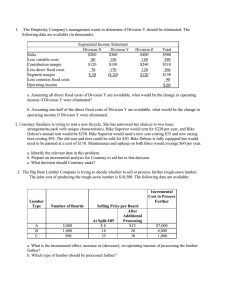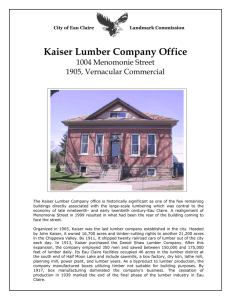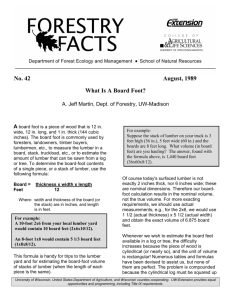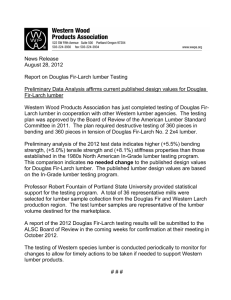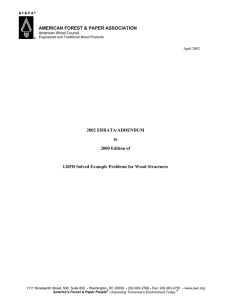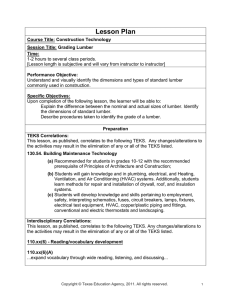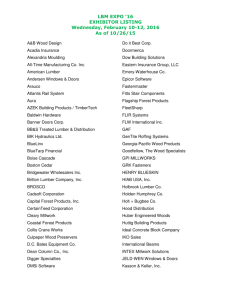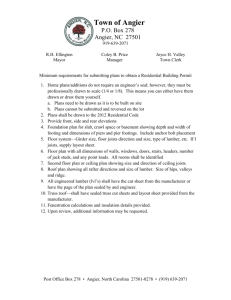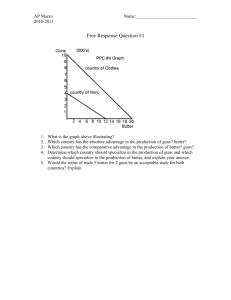Adjustment Factors For Base Values
advertisement
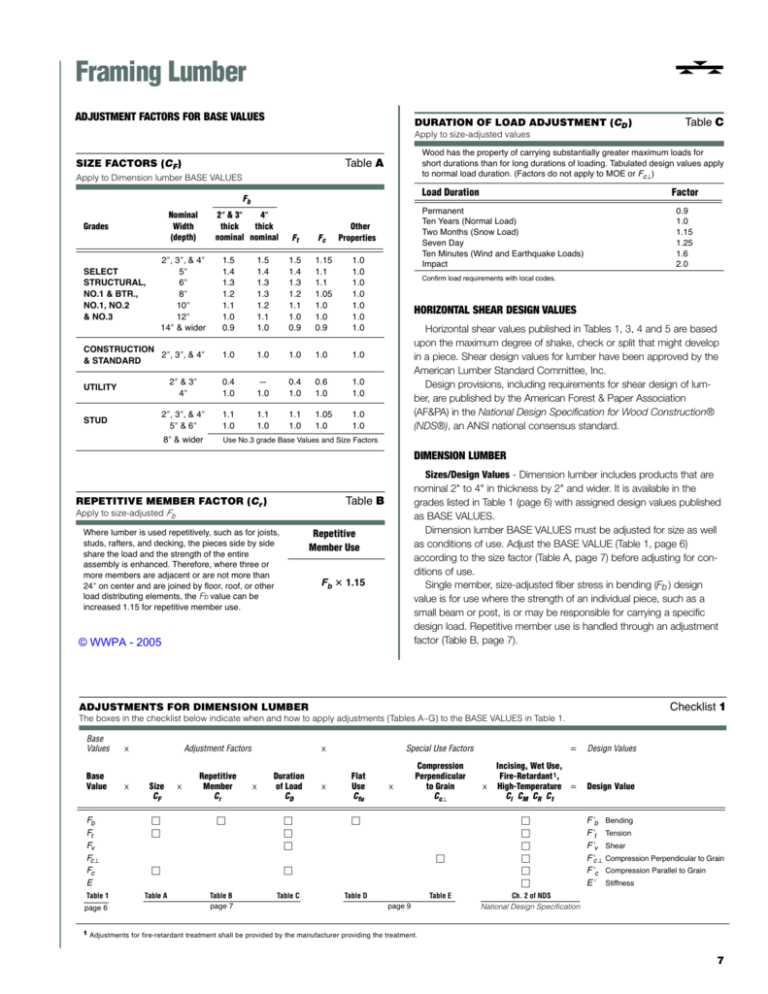
Framing Lumber ADJUSTMENT FACTORS FOR BASE VALUES DURATION OF LOAD ADJUSTMENT (CD ) Table C Apply to size-adjusted values Wood has the property of carrying substantially greater maximum loads for short durations than for long durations of loading. Tabulated design values apply to normal load duration. (Factors do not apply to MOE or Fc ⊥) Table A SIZE FACTORS (CF) Apply to Dimension lumber BASE VALUES Load Duration Fb Nominal Width (depth) Grades 2ⴖ & 3ⴖ 4ⴖ thick thick nominal nominal Ft Fc Other Properties 2″, 3″, & 4″ 5″ 6″ 8″ 10″ 12″ 14″ & wider 1.5 1.4 1.3 1.2 1.1 1.0 0.9 1.5 1.4 1.3 1.3 1.2 1.1 1.0 1.5 1.4 1.3 1.2 1.1 1.0 0.9 1.15 1.1 1.1 1.05 1.0 1.0 0.9 1.0 1.0 1.0 1.0 1.0 1.0 1.0 CONSTRUCTION 2″, 3″, & 4″ & STANDARD 1.0 1.0 1.0 1.0 1.0 2″ & 3″ 4″ 0.4 1.0 — 1.0 0.4 1.0 0.6 1.0 1.0 1.0 2″, 3″, & 4″ 5″ & 6″ 1.1 1.0 1.1 1.0 1.1 1.0 1.05 1.0 1.0 1.0 8″ & wider Use No.3 grade Base Values and Size Factors SELECT STRUCTURAL, NO.1 & BTR., NO.1, NO.2 & NO.3 UTILITY STUD Factor Permanent Ten Years (Normal Load) Two Months (Snow Load) Seven Day Ten Minutes (Wind and Earthquake Loads) Impact 0.9 1.0 1.15 1.25 1.6 2.0 Confirm load requirements with local codes. HORIZONTAL SHEAR DESIGN VALUES Horizontal shear values published in Tables 1, 3, 4 and 5 are based upon the maximum degree of shake, check or split that might develop in a piece. Shear design values for lumber have been approved by the American Lumber Standard Committee, Inc. Design provisions, including requirements for shear design of lumber, are published by the American Forest & Paper Association (AF&PA) in the National Design Specification for Wood Construction® (NDS®), an ANSI national consensus standard. DIMENSION LUMBER Sizes/Design Values - Dimension lumber includes products that are nominal 2" to 4" in thickness by 2" and wider. It is available in the grades listed in Table 1 (page 6) with assigned design values published as BASE VALUES. Dimension lumber BASE VALUES must be adjusted for size as well as conditions of use. Adjust the BASE VALUE (Table 1, page 6) according to the size factor (Table A, page 7) before adjusting for conditions of use. Single member, size-adjusted fiber stress in bending (Fb ) design value is for use where the strength of an individual piece, such as a small beam or post, is or may be responsible for carrying a specific design load. Repetitive member use is handled through an adjustment factor (Table B, page 7). Table B REPETITIVE MEMBER FACTOR (Cr ) Apply to size-adjusted Fb Where lumber is used repetitively, such as for joists, studs, rafters, and decking, the pieces side by side share the load and the strength of the entire assembly is enhanced. Therefore, where three or more members are adjacent or are not more than 24″ on center and are joined by floor, roof, or other load distributing elements, the Fb value can be increased 1.15 for repetitive member use. Repetitive Member Use Fb ⴛ 1.15 © WWPA - 2005 Checklist 1 ADJUSTMENTS FOR DIMENSION LUMBER The boxes in the checklist below indicate when and how to apply adjustments (Tables A–G) to the BASE VALUES in Table 1. Base Values Base Value Fb Ft Fv Fc ⊥ Fc E Table 1 page 6 x Adjustment Factors x Repetitive Member Cr Size CF □ □ x □ x Duration of Load CD □ □ □ x Flat Use Cfu x Compression Perpendicular to Grain Cc ⊥ □ □ □ Table A □ Table B page 7 Table C = Design Values Incising, Wet Use, Fire-Retardant 1, High-Temperature = Ci CM CR C t Design Value Special Use Factors x Table D Table E page 9 x □ □ □ □ □ □ F ′b F ′t F ′v F c′ ⊥ F ′c E′ Bending Tension Shear Compression Perpendicular to Grain Compression Parallel to Grain Stiffness Ch. 2 of NDS National Design Specification 1 Adjustments for fire-retardant treatment shall be provided by the manufacturer providing the treatment. 7



